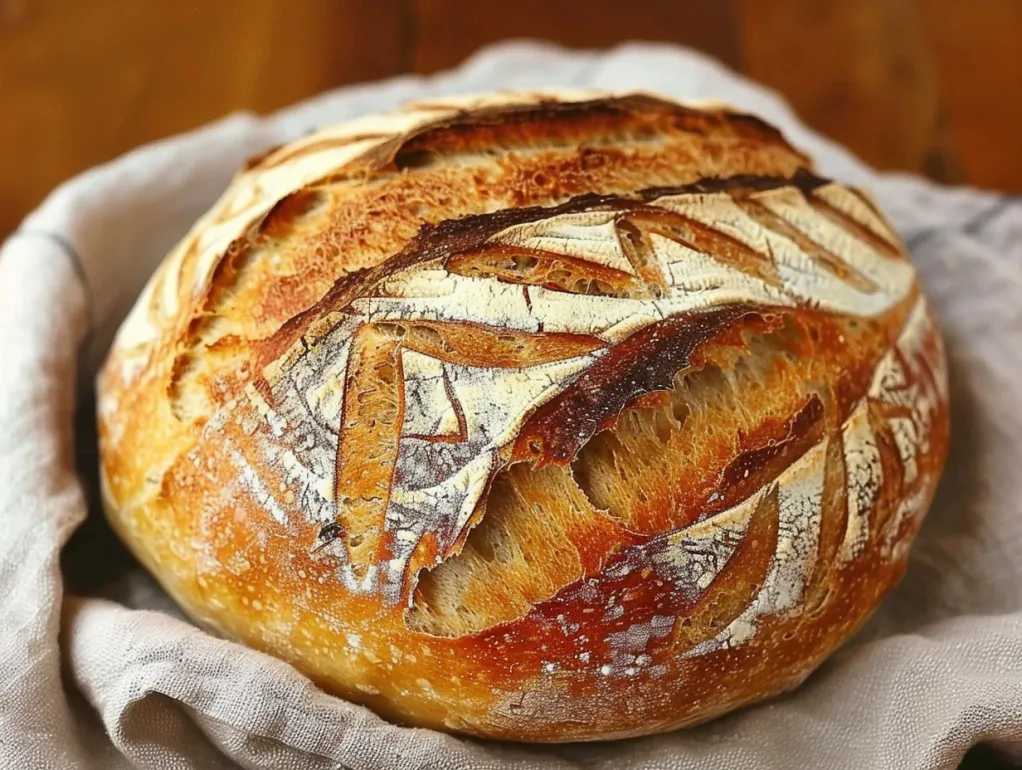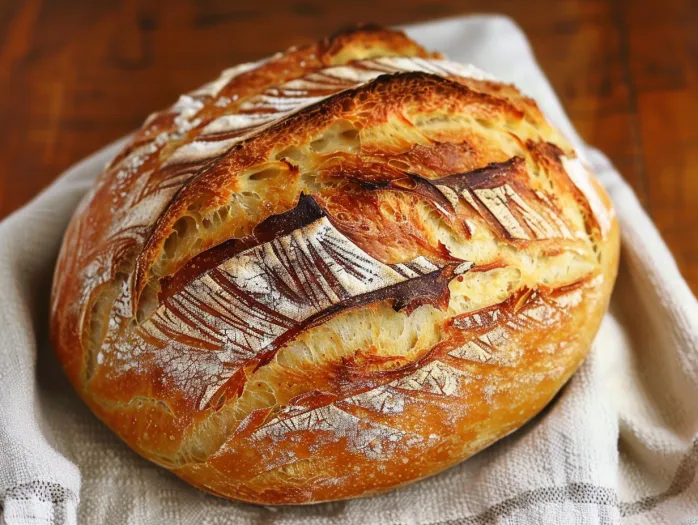 Pin
Pin
Sourdough bread is the kind of recipe you make when you want something deeply satisfying Slow fermentation and simple ingredients transform into a loaf that makes your whole kitchen smell amazing and brings everyone to the table My first sourdough was during a winter weekend and now each bake feels like a little ritual I look forward to
There is something meditative about shaping and scoring the dough Watching it rise overnight is like a tiny bit of kitchen magic that never gets old
Ingredients
- Bread flour: gives you that chewy crumb and beautiful open holes Choose a high-protein flour for best texture
- Water: hydrates the dough and helps gluten develop Use filtered or spring water if your tap water is heavily chlorinated
- Active sourdough starter: brings natural tang and rise For best results make sure your starter is bubbly and passes the float test
- Salt: seasons the dough and supports fermentation Use fine sea salt or kosher salt for even distribution
Step-by-Step Instructions
- Mix and Autolyse:
- Stir together the bread flour and water in a large bowl until just combined Cover and let rest for an hour This hydrates the flour fully and begins gluten development without any kneading
- Incorporate Starter and Salt:
- Add your sourdough starter and salt to the rested dough Mix thoroughly using your hands or a sturdy spoon Make sure everything is evenly distributed
- Bulk Fermentation and Folds:
- Set the dough aside to rise at room temperature for about four to five hours During the first two hours complete stretch and folds every thirty minutes Gently grab one side of the dough stretch upward and fold it over the center Rotate the bowl and repeat to strengthen the gluten These folds help create that signature open crumb
- Shape and Overnight Proof:
- After bulk fermentation shape the dough into a tight round Place seam side up in a floured banneton or a bowl lined with a kitchen towel Cover and refrigerate for twelve to sixteen hours Sleeping while your dough develops flavor is a real treat
- Score and Bake:
- Preheat your oven with a Dutch oven inside to four hundred seventy five degrees Fahrenheit Turn your dough out onto parchment paper Score the top using a sharp blade for controlled rise and a beautiful pattern Lift with the parchment and transfer carefully to the hot Dutch oven Cover and bake for twenty minutes then uncover and bake another twenty to twenty five minutes until the crust is deeply golden
- Cool and Slice:
- Once baked transfer the bread to a wire rack Let it cool for at least an hour before slicing This is crucial for the crumb to finish setting
 Pin
Pin
My favorite part is the moment I peel back the Dutch oven lid and see the loaf spring up with a golden crust My family cheers every time we slice into a fresh loaf and pass warm pieces around the table
Storage Tips
Store your sourdough at room temperature in a paper bag or wrapped loosely in a kitchen towel This keeps the crust crisp Avoid plastic bags to prevent a chewy or soggy exterior Sliced bread can be frozen with parchment between slices then toasted straight from the freezer
Ingredient Substitutions
No bread flour You can use a mix of all-purpose and whole wheat for a denser texture Rye flour also works but will make the dough stickier and denser You can replace up to twenty percent of the flour with whole grains for extra flavor
Serving Suggestions
Sourdough is perfect for open-faced sandwiches toast with butter or as a base for bruschetta It pairs beautifully with soups or becomes a delicious grilled cheese Try it dipped in olive oil with sea salt flakes
 Pin
Pin
Cultural Context
Natural wild-yeast breads have a long history across Europe and especially in San Francisco which is famous for its tangy sourdough Each region develops its own flavor profile based on local starter bacteria It is a true taste of tradition that connects home bakers around the world
Frequently Asked Questions About the Recipe
- → What makes sourdough bread tangy?
The tangy flavor comes from long fermentation with a wild yeast starter, which develops lactic acid for a signature sour note.
- → Why bake in a Dutch oven?
Baking in a preheated Dutch oven traps steam, helping the loaf rise and form a crisp, golden crust.
- → How do you know when the bread is ready?
The loaf is done when it's golden brown with a hollow sound when tapped on the bottom. Allow it to cool fully before slicing.
- → Can I substitute whole wheat flour?
Yes, try replacing up to 30% of the bread flour with whole wheat or rye for added flavor and texture complexity.
- → How important is using a kitchen scale?
A kitchen scale ensures precise measurements, especially vital for hydration and achieving the desired dough consistency.
